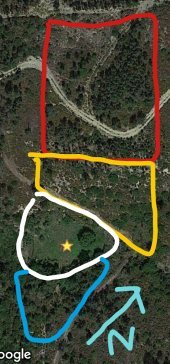
 1
1
























A human being should be able to change a diaper, plan an invasion, butcher a hog, conn a ship, design a building, write a sonnet, balance accounts, build a wall, set a bone, comfort the dying, take orders, give orders, cooperate, act alone, solve equations, analyze a new problem, pitch manure, program a computer, cook a tasty meal, fight efficiently, die gallantly. Specialization is for insects.
-Robert A. Heinlein





List of Bryant RedHawk's Epic Soil Series Threads We love visitors, that's why we live in a secluded cabin deep in the woods. "Buzzard's Roost (Asnikiye Heca) Farm." Promoting permaculture to save our planet.
















 1
1




I am still unconvinced about terracing, I need to better understand the benefits. I can understand it on a steep slope, but on a slope of around 10 degrees are there great benefits?
List of Bryant RedHawk's Epic Soil Series Threads We love visitors, that's why we live in a secluded cabin deep in the woods. "Buzzard's Roost (Asnikiye Heca) Farm." Promoting permaculture to save our planet.




In cases like this I usually advise to do what looks best to you and so best serves your purposes, the human eye is a marvelous judge if we pay attention to what the brain tells us. (I refer to this as the "feels right" scenario).






I can imagine a hugel herb spiral. What I would do first is to used stone and a bunch of your rubble to build up a rising spiral of solid material. This spiral of stony material would have a spiral of un-stony space, so you would then infill the lower level of the space of the spiral with your hugel wood, followed by the sub soils, top soils, and compost to bring it above the level of the path that is the stony spiral. Make sense?Either do a hugel or an herb spiral, but if you build an herb spiral, build it solid or you will be disappointed.
"Never doubt that a small group of thoughtful, committed citizens can change the world; indeed, it's the only thing that ever has."-Margaret Mead "The only thing worse than being blind, is having sight but no vision."-Helen Keller




 1
1




Roberto pokachinni wrote:
I can imagine a hugel herb spiral. What I would do first is to used stone and a bunch of your rubble to build up a rising spiral of solid material. This spiral of stony material would have a spiral of un-stony space, so you would then infill the lower level of the space of the spiral with your hugel wood, followed by the sub soils, top soils, and compost to bring it above the level of the path that is the stony spiral. Make sense?Either do a hugel or an herb spiral, but if you build an herb spiral, build it solid or you will be disappointed.

|
This looks like a job for .... legal tender! It says so right in this tiny ad:
Play Your Way to a Sustainable Lifestyle: Uncover Permaculture Principles with Each Card
https://gardener-gift.com/
|







